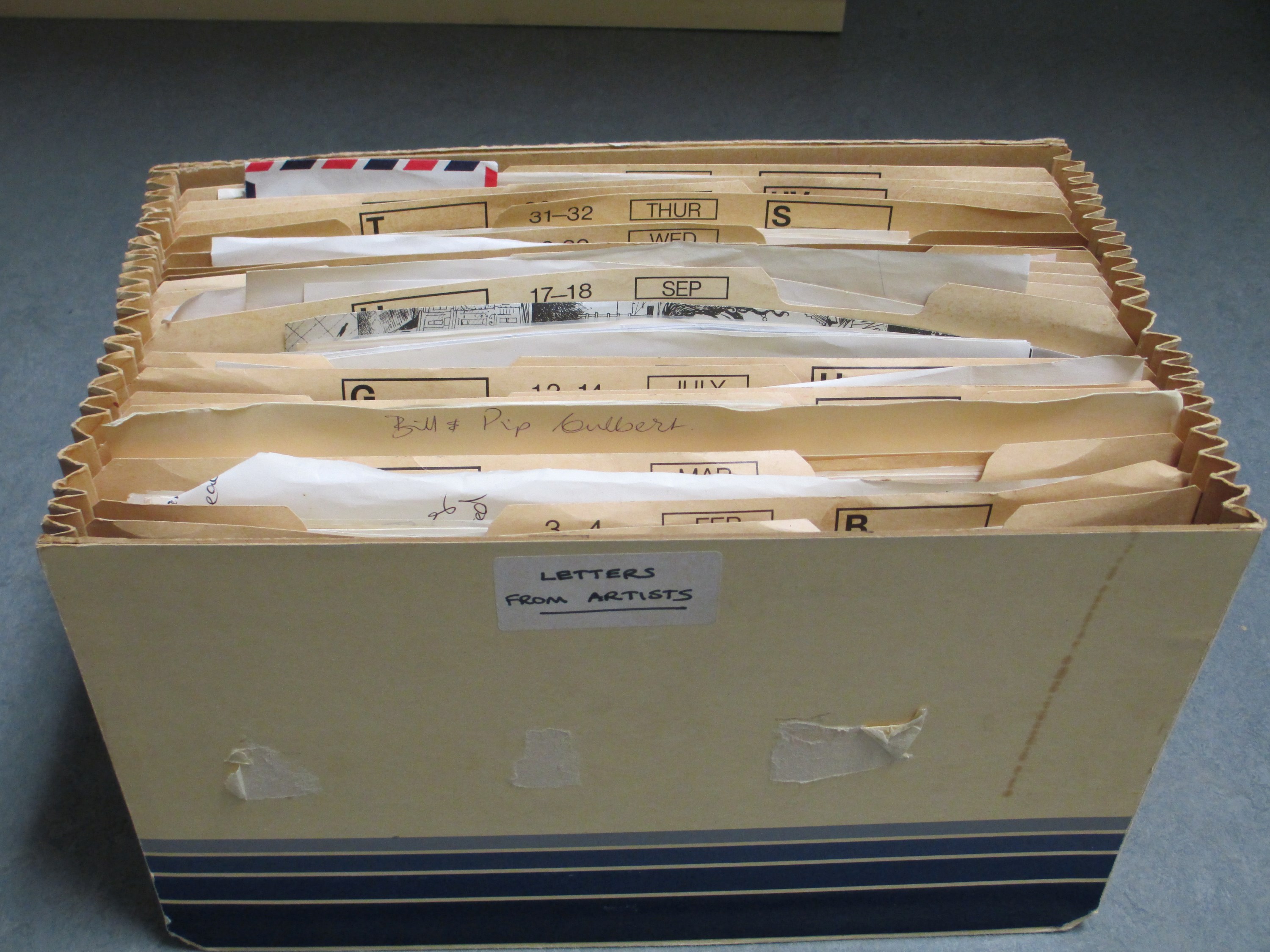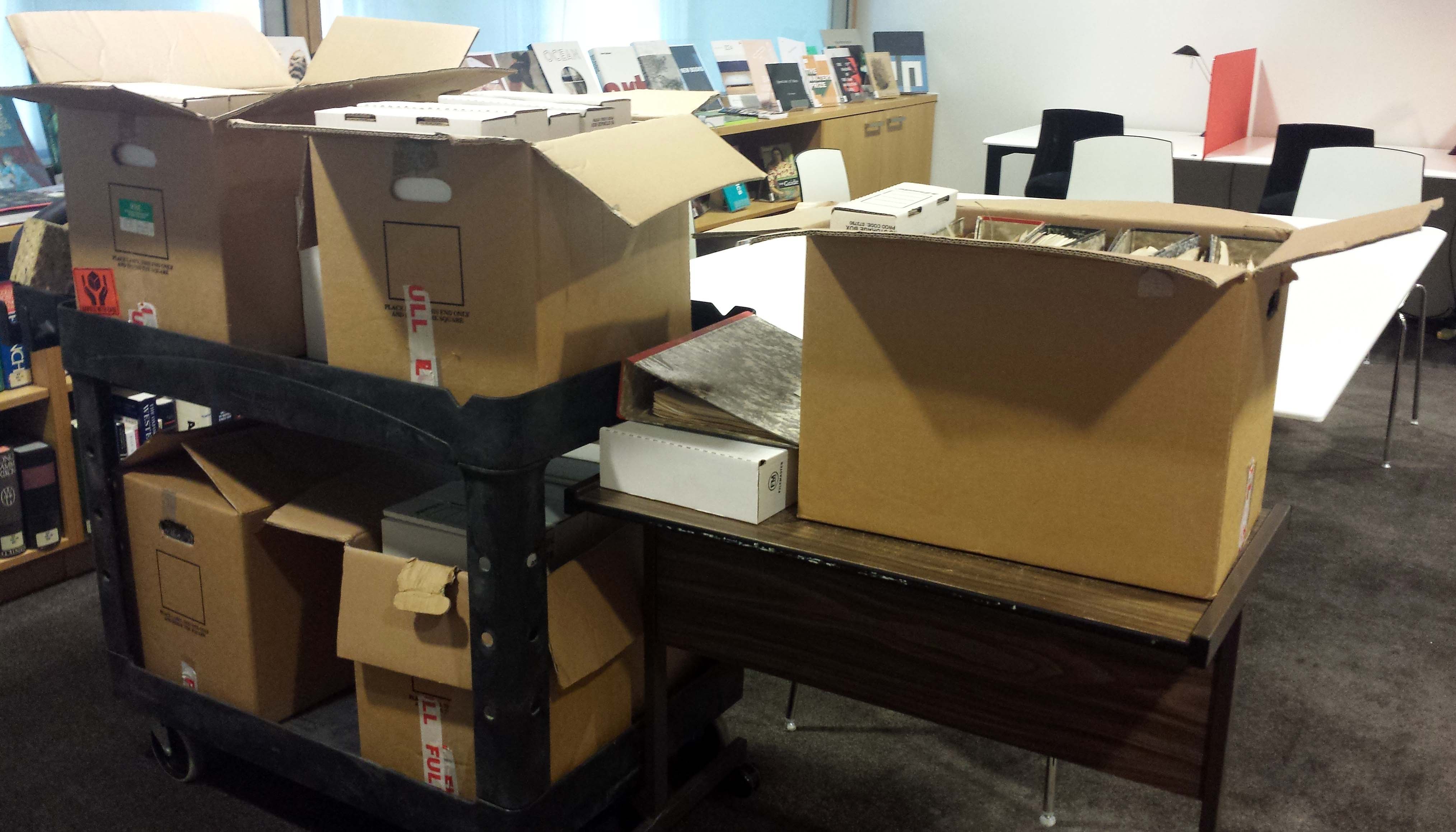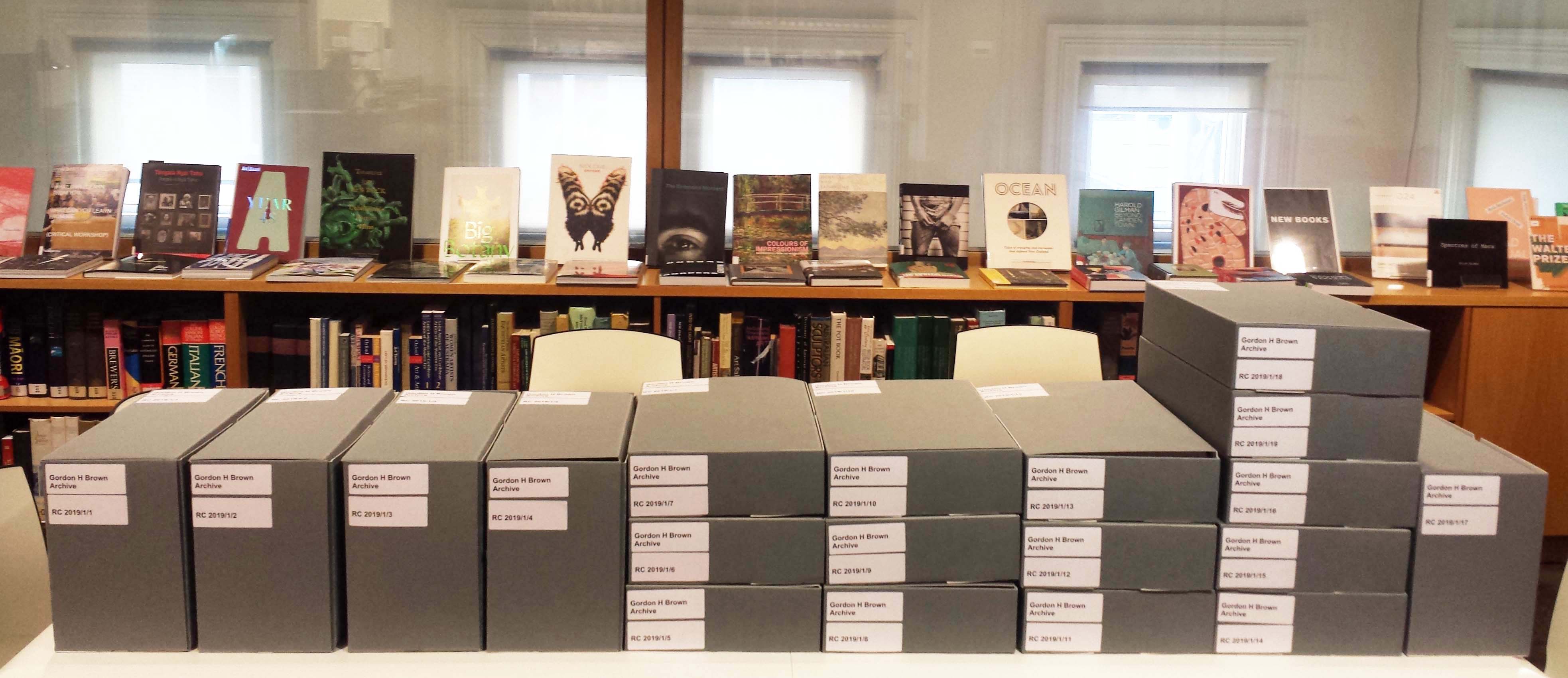You may be an art student or a senior artist with a long exhibiting history, but I hope wherever you are in your career you will find some of what I have to say of use. I’m Caroline McBride and I’m an archivist at the E H McCormick Research Library at Auckland Art Gallery Toi o Tāmaki. I’d like to share some tips and ideas about how you, the artist, could archive your own practice.
My aim is not to tell you what to do but to motivate you to think about the possibilities, from how you conceive of an archive to how you store it. For example, do you think of your archive as essentially a solitary project or as belonging to a wider group? From a practical point of view, you will see that there are others who are available to help and interested in what you’re attempting to do. I’m just one of those people.
Why archive?
An archive is a record that has been selected for permanent preservation. Below I outline what these ‘records’ might consist of, but let’s consider the benefits of having an archive, for you and for others.
Benefits include:
- Archive as evidence – for example, that named and dated sketch puts you in a certain place at a certain time
- Archive as inspiration – you or another artist might like to ‘mine’ your archive for ideas in the future or you might like to return to an earlier preoccupation
- Archive for its materiality – that paint-spotted, well-loved tee shirt that you always wore in the studio has an inherent value
- Archive for exhibition – complement or contextualise your art with an item from your archive
- Archive as legacy – your archive represents you as an artist and means that not only your artwork will live on
- Archive as knowledge production – your recorded ideas and observations may illuminate your working method, motivations and interests
- Archive for cultural appreciation – your archive may contribute to a broader understanding of artistic practice at the time you are/ were working
What shall I save? What could I be creating for my archive?
Here are some ideas that researchers and artists have found useful:
- Digital images or photographic prints of your artworks
- A record of each of your artworks whether it be a handwritten list or a sophisticated database
- Significant documents pertaining to your education, travel, influences, reading, research, exhibiting history, sales, commissions, studios and so on
- Correspondence with fellow artists, curators, institutions, dealers – any communication where you discuss your art
- Ephemera – whether born-digital or from the era of print, with its interesting typographies, keep exhibition invitations (both yours and to exhibitions you attended), checklists, catalogues, flyers and posters
- Non-paper items – save ‘stuff’ of interest and import to your practice: clothing, samples, laminated membership cards.
Creative additions:
- A diary – a record of who you met, exhibitions you attended, study schedules and the like
- An art journal or log – additional to or as an alternative to a listing or database that provides information and inspiration on completed or unrealised projects
- A website – provide a link among your records to any website you created that hopefully reflects your current work or has been archived if no longer being maintained
- Social media – indicate elsewhere where you like to post or whom/what you follow



